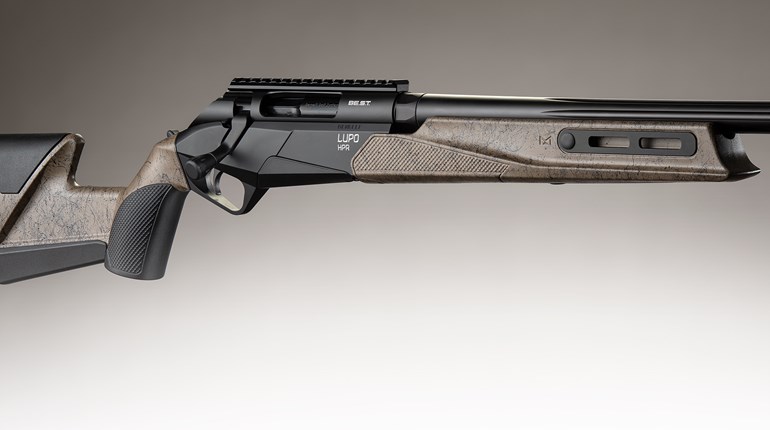
Biathlon is a unique winter sport that combines skiing and rifle shooting into a contest where time and marksmanship determines who wins. With guns strapped to their backs, athletes ski for a predetermined distance, stopping to shoot at a designated target in two shooting positions―prone and standing. Final rankings are decided according to the skiing time and the accuracy of the shooting.
There will be 11 biathlon events at this year’s Winter Olympics in PyeongChang, Korea, including five for Men, five for Women, and one Mixed Relay at the Alpensia Biathlon Center.
Biathlon competitions are divided into Individual, Sprint, Pursuit, Relay and Mass Start events. For Individual, athletes’ starts are staggered by 30 seconds or one minute. There’s four rounds of shooting with five shots for each: prone, standing, prone, standing. Missed targets result in a one minute penalty added to the athlete’s skiing time.
For the Sprint, there’s a total of two rounds: one prone and one standing for a total of 10 shots. Missed targets result in a penalty loop of 150 meters that must be skied before the athlete can continue the race.
In Pursuit, the departure order is decided from the results of the Sprint and the Individual competitions, with the winners of the Sprint and the Individual competition departing first in Pursuit. The other athletes depart according to the amount of time they were behind the Sprint winner. While skiing, there’s a total of four shooting rounds with five shots for each round. Position order is prone, prone, standing, standing. If a target is missed, the athlete must ski the 150 meter penalty loop each time and continue the race.
Relay events have athletes divided into four-person teams. The Men’s competition is 7.5 km long and the Women’s is 6 km. Shooting takes place in two intervals, for the Men’s competition after skiing 2.5 km and 5 km and in the Women’s competition after skiing 2 km and 4 km. Athletes are given three spare bullets for every round of five targets―but if there are any missed targets after five shots, the spare three bullets must be hand loaded into the magazine of the rifle. For each miss after all eight bullets, the athlete must ski the 150 meter penalty loop, similar to the Sprint competition. The first runner of each team departs simultaneously. There is a 30 x 8 meter wide handover zone where the incoming and outgoing skiers make bodily contact while racing.
With the Mass Start, all athletes depart simultaneously, stopping a total of four times to shoot. They shoot two rounds of five shots prone, and two rounds of five shots standing. Every missed target forces athletes to ski the 150 meter penalty loop before they can continue.
Here’s a breakdown of the 2018 Olympic biathlon program:
- Men’s: 10 km sprint, 20 km individual, 4x7.5 km relay, 12.5 km pursuit, and 15 km mass start
- Women’s: 7.5 km sprint, 15 km individual, 4x6 km relay, 10 km pursuit, and 12.5 km mass start
- Mixed Relay: Women’s 2x6 km plus Men’s 2x7.5km
All 2018 Olympic biathlon events can be watched on two TV networks: NBC and NBCSN. Three events will be shown live. Below is a schedule of the finals, with television coverage in parentheses. Live broadcasts are in bold. Additionally, live-streaming of biathlon events will be available at NBCOlympics.com or via the NBC Sports app.
Note: All times are Eastern Standard.
- February 10: Women’s 7.5 km sprint, 6:15 a.m. (NBCSN, 1:00-5:00 p.m.)
- February 11: Men’s 10 km sprint, 6:15 a.m. (NBCSN, 5:00-9:00 a.m. and 5:30-8:30 p.m.; NBC, 3:00-6:00 p.m.)
- February 12: Women’s 10 km pursuit, 5:10 a.m. (NBCSN, 5:10-7:00 a.m.); men’s 12.5 km pursuit, 7:00 a.m. (NBCSN, 11:00 a.m.-3:00 p.m.)
- February 14: Women’s 15 km individual, 6:05 a.m. (NBCSN, 11:30 a.m.-1:15 p.m.)
- February 15: Men’s 20 km individual, 6:00 a.m. (NBC, 1:05 a.m.-2:00 a.m.; NBCSN, noon-2:00 p.m.)
- February 17: Women’s 12.5 km mass start, 6:15 a.m. (NBCSN, 10:30 a.m.-1:30 p.m.; NBC, 3:00-6:00 p.m.)
- February 18: Men’s 15 km mass start, 6:15 a.m. (NBCSN, 10:15 a.m.-1:00 p.m.; NBC, 3:00-6:00 p.m.)
- February 20: Mixed relay, 6:15 a.m. (NBCSN, 9:30 a.m.-noon; NBC, 3:00-6:00 p.m.)
- February 22: Women’s 4x6 km relay, 6:15 a.m. (NBCSN, 5:20-7:45 a.m.; NBC, 3:00-5:00 p.m.)
- February 23: Men’s 4x7.5 km relay, 6:15 a.m. (NBC, 3:00-5:00 p.m.; NBCSN, 8:00 p.m.-midnight)
Learn more about biathlon here.



































